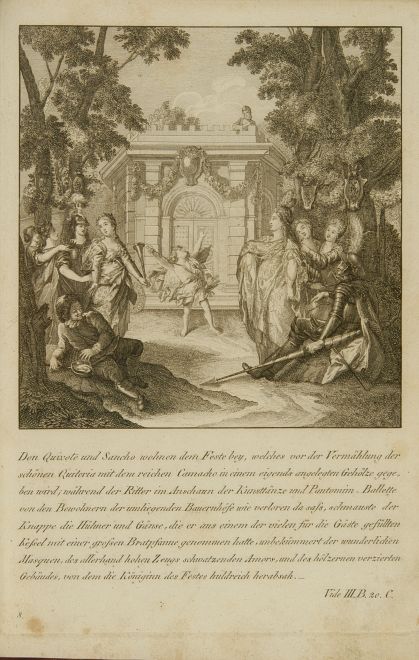
click to enlarge
In the center is Cupid, dancing in front of a castle where a Virgin is protected.
On the left, as part of Cupid's retinue, Poetry (with Fame's trumpet), Prudence (as a prudent virgin with a small oil lamp), Nobility/Valor (with a crown)and Wisdom (Athena); Wisdom does not appear in Cervantes' original text, but she does in the French translations (Sagesse).
On the right, Wealth and his retinue: Liberality (with a cornucopia and a pair of compasses) and Largesse.
They should also appear Treasure and Quiet Possession, but they have not been represented.
The first retinue refers to Basilio, the second one to Camacho.
Sancho only eats while don Quixote observes this performance.
Rich and great scene where it is reflected 18th century liking for court theater and allegorical and symbolic literature.
Drawing and engraving of excellent quality.
2 – Plate 8.
3 - Wrongly-placed; it should appear after illus. in p. 12 ("Dance of shepherdesses").